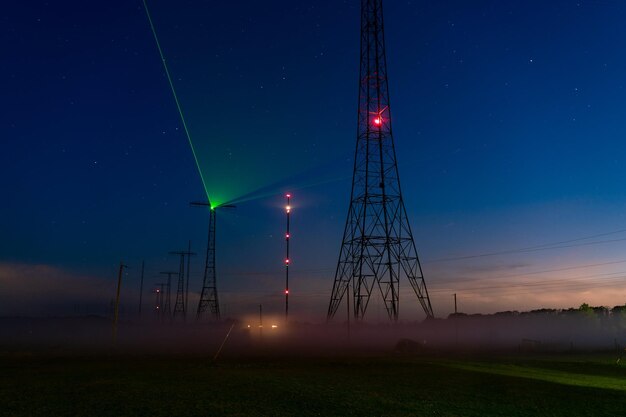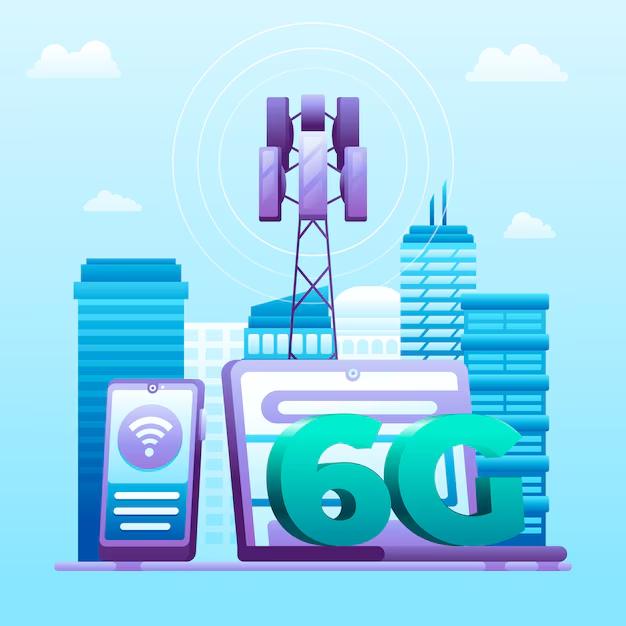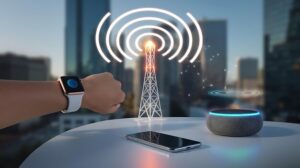Imagine a world where your smartphone, electric vehicle, or even an entire home is powered without ever needing to plug into a socket. This is the promise of Wireless Power Transmission (WPT), a groundbreaking innovation poised to redefine how energy is distributed and consumed. From reducing dependency on physical cables to enabling energy access in remote areas, WPT is a step toward a more connected, efficient, and sustainable future.
The idea of transmitting power wirelessly isn’t new. Over a century ago, Nikola Tesla envisioned a world where energy could be distributed wirelessly through the air. While his ambitions were ahead of their time, the resurgence of wireless power technologies in recent decades has turned that vision into a feasible reality. Today, WPT finds applications across diverse fields, from consumer electronics and healthcare to electric vehicles and even space exploration.
In this article, we will delve into the fascinating world of wireless power transmission, exploring the underlying science, its applications, advantages, challenges, and the innovations shaping its future. Join us as we uncover how WPT is paving the way for a revolutionary approach to energy distribution.

What Is Wireless Power Transmission?
Wireless Power Transmission (WPT) is a technology that enables the transfer of electrical energy from a power source to a receiving device without the need for physical wires or connectors. This is achieved through electromagnetic fields, which carry energy across a medium—typically air—over varying distances.
Unlike traditional wired power systems, where electrical energy is conducted through cables, WPT relies on principles such as electromagnetic induction, magnetic resonance, or radio frequency (RF) waves to deliver power. These methods allow for seamless energy transfer, eliminating the need for direct contact between power sources and devices.

Types of Wireless Power Transmission
Wireless power systems are broadly categorized based on the range and the method of energy transfer:
- Short-Range Wireless Power Transmission
- Utilizes electromagnetic induction.
- Commonly used in charging devices like smartphones, smartwatches, and medical implants.
- Example: Qi wireless charging pads for mobile devices.
- Mid-Range Wireless Power Transmission
- Employs magnetic resonance to extend the range of energy transfer.
- Suitable for powering household appliances and electric vehicles.
- Example: Wireless charging systems for electric cars.
- Long-Range Wireless Power Transmission
- Uses RF waves or microwave energy to transmit power over greater distances.
- Applications include satellite-to-ground power transfer and providing energy to remote or off-grid areas.
- Example: Space-based solar power systems transmitting energy to Earth.
How It Works
The operation of WPT depends on a few core principles:
- Electromagnetic Induction: Coils in the transmitter and receiver create a magnetic field to transfer energy wirelessly.
- Magnetic Resonance: Energy transfer occurs through resonant coupling between two tuned circuits.
- Radio Frequency (RF): RF waves carry energy over long distances, converted into electrical power at the receiving end.
Applications of Wireless Power Transmission
Wireless Power Transmission (WPT) is transforming industries by enabling seamless and efficient energy transfer across various sectors. Here are some key applications demonstrating its versatility and potential:

1. Consumer Electronics
WPT is widely used in powering and charging everyday devices, offering convenience and eliminating cable clutter.
- Smartphones and Wearables: Devices like phones, smartwatches, and earbuds benefit from wireless charging technologies such as Qi and MagSafe.
- Home Appliances: Cordless kitchen gadgets and entertainment systems use mid-range wireless power for a streamlined user experience.
2. Electric Vehicles (EVs)
Wireless charging for EVs is a game-changer, simplifying the charging process and paving the way for autonomous fleets.
- Residential Charging Pads: Wireless power systems installed in garages or parking spots.
- Public Infrastructure: Dynamic wireless charging lanes for EVs in transit, enhancing range and reducing downtime.
3. Healthcare and Medical Devices
WPT is revolutionizing healthcare by powering critical medical devices without wires, reducing risks of infection, and improving patient mobility.
- Implanted Medical Devices: Pacemakers, insulin pumps, and neurostimulators can be recharged wirelessly.
- Wearable Health Devices: Fitness trackers and monitoring systems benefit from continuous power supply.
4. Industrial Applications
Industries are leveraging WPT for automation and operational efficiency.
- Robotics: Wirelessly powered robots operate in manufacturing, reducing cable dependency.
- Drones: Wireless charging stations for drones enable uninterrupted operation in logistics and surveillance.
5. Smart Homes and IoT Ecosystems
WPT plays a vital role in powering smart home devices and IoT ecosystems, enhancing user convenience and energy efficiency.
- Lighting Systems: Cordless smart lights and LED panels powered wirelessly.
- IoT Devices: Smart sensors and cameras that function without frequent battery replacement.
6. Space Exploration
In space exploration, WPT enables energy transfer in environments where traditional methods are impractical.
- Satellites: Wireless energy beaming powers satellites and orbital stations.
- Space-Based Solar Power: Solar arrays in space transfer energy to Earth wirelessly, providing renewable energy solutions.
7. Public Infrastructure
WPT is being adopted to power public services, enhancing urban living.
- Electric Public Transit: Wireless charging for buses and trams at designated stops.
- Smart City Infrastructure: Wireless power for streetlights, surveillance systems, and public kiosks.
8. Military and Defense
Military applications of WPT focus on reliability and efficiency in challenging environments.
- Remote Power Supply: Wireless systems power equipment in inaccessible locations.
- Wearable Gear: Wireless-powered devices for soldiers, such as communication systems and sensors.
9. Renewable Energy Systems
WPT supports renewable energy by enabling efficient energy transfer and distribution.
- Offshore Wind Farms: Transferring energy wirelessly to land-based grids.
- Solar Farms: Wireless power hubs for large-scale solar energy harvesting.
Advantages of Wireless Power Transmission
Wireless Power Transmission (WPT) offers numerous benefits that make it a transformative technology in energy distribution. By eliminating the need for physical connections, WPT introduces efficiency, convenience, and sustainability across various applications. Below are the key advantages:

1. Convenience and Accessibility
- No Physical Connections: WPT eliminates the need for wires, plugs, and sockets, simplifying energy transfer for users.
- User-Friendly Systems: Devices can be powered and charged seamlessly by simply being in proximity to a power source.
- Accessibility in Remote Areas: Enables energy delivery to locations where traditional infrastructure is impractical or unavailable.
2. Enhanced Safety
- Reduced Electrical Hazards: Eliminates risks of electric shocks, frayed wires, and short circuits.
- Weather-Resistant Infrastructure: Wireless systems are less susceptible to environmental factors like rain, snow, or wear and tear.
- Safer in Hazardous Environments: Ideal for powering devices in environments where wired connections pose risks, such as in medical implants or industrial settings.
3. Improved Aesthetics and Mobility
- Clutter-Free Design: Eliminates tangled wires and improves the visual appeal of homes, offices, and public spaces.
- Enhanced Mobility: Devices are no longer tethered to power outlets, increasing usability and flexibility.
4. Scalability and Flexibility
- Supports Multiple Devices: WPT systems can power multiple devices simultaneously, reducing the need for individual chargers.
- Dynamic Applications: Wireless charging pads, dynamic vehicle charging lanes, and other solutions allow devices to move while being charged.
5. Energy Efficiency in Specific Applications
- Optimized Power Usage: Advanced WPT systems reduce energy loss during transmission with technologies like magnetic resonance and beamforming.
- Eco-Friendly Solutions: Reduces dependency on disposable batteries, contributing to sustainable energy consumption.
6. Enables New Technological Innovations
- Integration with IoT: Powers sensors, smart devices, and IoT ecosystems, enabling constant connectivity.
- Advances in Autonomous Systems: Facilitates the development of wirelessly powered drones, robots, and vehicles.
- Space Exploration: Supports extraterrestrial operations by enabling energy transfer in space.
7. Reduces Maintenance and Downtime
- Minimal Wear and Tear: No physical connections mean fewer parts to wear out or break down.
- Cost Savings: Reduces long-term maintenance costs compared to wired systems.
8. Sustainability and Environmental Impact
- Lower Electronic Waste: Reduces the need for disposable chargers and cables.
- Renewable Energy Integration: Wireless energy transfer can work with solar, wind, and other renewable sources to enhance sustainability.
Conclusion
Wireless Power Transmission (WPT) is revolutionizing the way energy is delivered, offering unparalleled convenience, safety, and efficiency across diverse applications. From powering consumer electronics to advancing industries like healthcare, transportation, and space exploration, WPT has proven its potential to eliminate traditional constraints of wired systems. As the technology evolves, it promises to integrate seamlessly with emerging innovations like IoT, smart cities, and renewable energy solutions, paving the way for a truly wireless future.
While challenges like efficiency losses, implementation costs, and regulatory hurdles remain, ongoing research and development are addressing these limitations. With continued advancements, WPT has the potential to transform global energy infrastructure, making it more sustainable, accessible, and adaptive to modern needs. By embracing WPT, we are not just powering devices—we are powering progress, innovation, and a more connected world.












